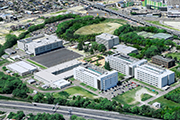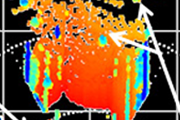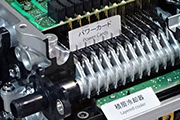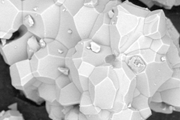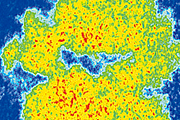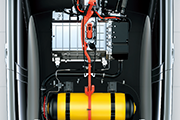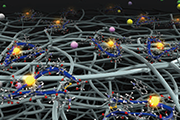Published in Applied Catalysis B: Environmental
The study on “NH3 decomposition catalyst for on-site H2 fueling stations” by Kiyoshi Yamazaki et al., in collaboration with Toyota Motor Corporation, was published in Applied Catalysis B: Environmental.
To enable on-site H2 fueling stations, NH3 decomposition catalysts must achieve a high NH3 conversion of over 99.5%, a space velocity of 30,000 h−1, and a reaction temperature of 500 ℃ from a commercialization perspective. To meet these requirements, we propose the use of Ru catalysts supported on CeO2−PrOx composites (Ru/CP), prepared via a coprecipitation method. Compared to Ru/CeO2 and Ru/PrOx catalysts, the Ru/CP catalysts showed greater activity and met the target NH3 conversion with Pr content (=Pr/(Ce+Pr)) ranging from 33% to 67%. Our STEM observations and in situ X-ray absorption fine structure analysis revealed that increasing the Pr content improved Ru dispersion but inhibited Ru metalation due to a strong “metal-support interaction.” Notably, even when reduced at 550 ℃, 10% of the Ru in the Ru/PrOx catalyst remained as an oxide. These results suggest that optimal Pr content enhances both Ru dispersion and metalation, maximizing the number of active Ru sites.
Title: NH3 Decomposition over Ru/CeO2-PrOx Catalyst under High Space Velocity Conditions for an On-site H2 Fueling Station
Authors: Yamazaki, K., Matsumoto, M., Ishikawa, M., Sato, A.
Journal Name: Applied Catalysis B: Environmental
Published: December 30, 2022
https://doi.org/10.1016/j.apcatb.2022.122352





















